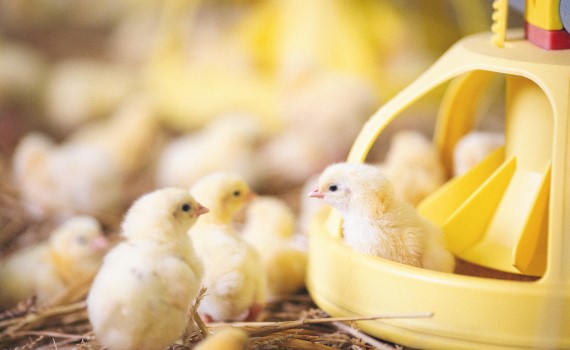Cross-protection vaccine protocols key to limiting DMV/1639 spread in US flocks
Thorough vaccination programs and bird surveillance are critical to giving US flocks the best possible chance of protection against evolving strains of infectious bronchitis virus (IBV).
Brian Jordan, PhD, associate professor at the University of Georgia, said that while vaccinating against IBV is standard procedure in the poultry industry, matching a vaccine to the strain of the virus isn’t always possible.
This is because the virus often makes mistakes when it replicates, resulting in changes to its genetic makeup and the creation of new variants like DMV/1639 — a strain that has become one of the most common forms of IBV in US poultry production.
To address the challenge, producers combine different serotype vaccines to achieve cross-protection — a move that has gained traction in the US in recent years. However, not all combinations work equally well, Jordan told Poultry Health Today.
In a bid to measure the effectiveness of cross-protection programs against DMV/1639, Jordan and his team investigated the efficacy of Massachusetts and Georgia/08-type vaccination programs in flocks.
“We were…trying to understand why or how that challenge virus continues to move around the US [and] continues to be detected and isolated from different operations, even when that vaccine program is in use,” he said.
“And ultimately what we wanted to try to understand was how…these vaccines may prevent clinical signs [and] reduce some of the viral load in the field, but they don’t completely stop the virus,” he added. “How is that going to include the evolution of our next variant virus?”
In the study, Jordan and his team attempted to mimic what happens in the field by only vaccinating some birds and mixing groups of birds together to represent fully-vaccinated flocks, completely unvaccinated flocks and flocks where vaccination wasn’t perfect.
By looking at how DMV/1639 moved between the populations, the team wanted to know if thorough vaccination, which allowed birds to develop an immune response, would be enough to stop the virus from transmitting to other birds and spreading around the country.
The trial results showed the virus spread quickly between non-vaccinated birds, as well as between vaccinated birds that had been challenged and non-vaccinated birds.
However, what was more interesting, Jordan said, was that the team saw challenge-virus transmission in birds that were vaccinated and challenged, to other birds that were also well-vaccinated.
“[This] tells us that even in this Mass-Georgia/08 vaccination program, which I think is being pretty universally used for cross-protection…we do still have infection and replication of that challenge virus in the background,” he said.
“There was a significant reduction in clinical signs. You couldn’t tell that these birds were challenged. They looked perfectly healthy, and there would have been no issues at a processing plant, but we are still having virus infection and replication, which ultimately may influence how this virus changes or mutates in the future if it continues to do that.”
For Jordan, the findings demonstrate the importance of efficient vaccination application programs, ensuring all birds are vaccinated and able to mount an effective immune response.
“Management always plays a role in these viruses as well,” he added. “Viruses do better in cold weather, which correlates to a time when our management tends to suffer in the house because we don’t want to bring cold air in [and houses can get stuffy].
“So maybe focusing on vaccination, [and] making our management, particularly in the winter and spring, as good as it can possibly be [are what’s most important].
“And then just doing surveillance in your flocks to understand what viruses you actually have and tailoring the vaccine program to those particular challenges.”
Posted on May 4, 2021
 We’re glad you’re enjoying
We’re glad you’re enjoying














